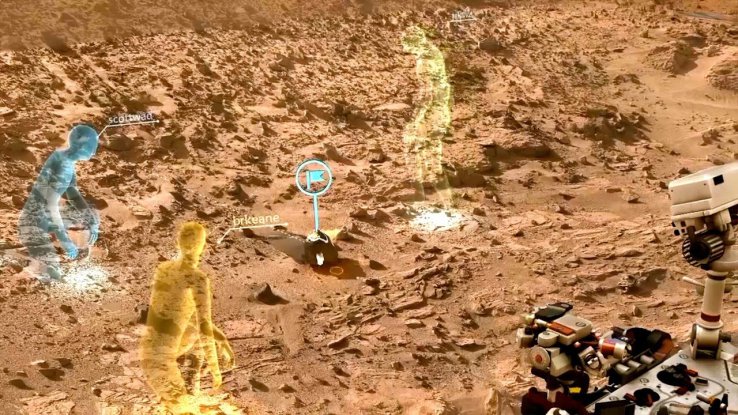Microsoft’s latest collaboration with NASA will give scientists the ability to explore Mars without actually stepping foot on the Red Planet.
While many people assumed the future of space exploration involved getting more astronauts to land on other planets, Microsoft’s HoloLens has opened the door for virtual space exploration.
The HoloLens headset makes the most out of 3-D simulations and virtual environment projections to create a detailed holographic image of Mars.
NASA’s Pasadena, California-based Jet Propulsion Laboratory is developing the new platform called OnSight, and the developers are hopeful that the new device could significantly accelerate space exploration.
“OnSight gives our rover scientists the ability to walk around and explore Mars right from their offices,” Dave Lavery, program executive of NASA’s Mars Science Laboratory, explained in a press release.
With NASA’s help, the HoloLens will go beyond creating your average Mars look-a-like.
Instead, the device will use actual images and data from NASA’s Curiosity rover.
This means the researchers will also be able to see live readings and data come in over the headset as well as getting a live, virtual look at the planet.
As they explore the planet, the scientists will also be able to assign activities for the rover to complete and see simulations of what the results will likely be.
The project is truly extending the possibilities of the HoloLens, which many tech-lovers anxiously awaited for gaming purposes or for better ways to interact with loved ones from miles away.
If OnSight proves to be successful, the headset will be much more than a breakthrough in communication and entertainment; it would pioneer the future of remote space exploration.
“Previously, our Mars explorers have been stuck on one side of a computer screen,” said Jeff Norris, the OnSight project manager. “This tool gives them the ability to explore the rover’s surroundings much as an Earth geologist would do field work here on our planet.”
Later this year, NASA plans to use the OnSight technology for multiple rover operations and embark on a remote Curiosity mission.

